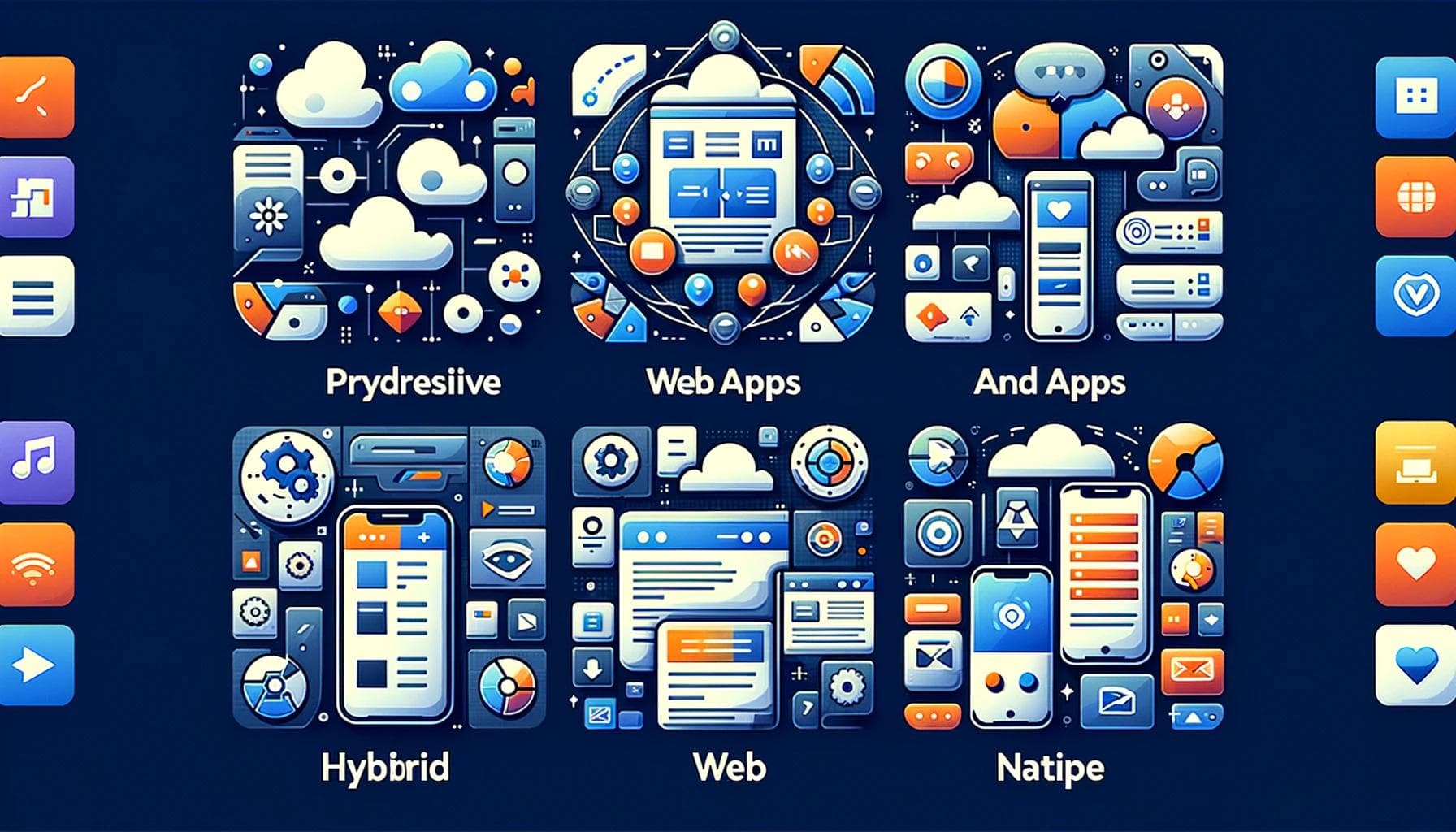In today's digital landscape, various application models exist, each with unique features, benefits, and limitations. This article provides a comparative analysis of Progressive Web Apps (PWAs), Web Apps, Hybrid Apps, and Native Apps, helping developers and businesses make informed decisions based on their specific needs.
Progressive Web Apps (PWAs)
- Definition: PWAs are web applications that use modern web capabilities to deliver an app-like experience. They combine features offered by most modern browsers with the benefits of mobile experience.
- Key Features: Offline functionality, push notifications, fast performance, and installability.
- Advantages: Improved performance, no app store requirements, easier updates, and wide reach across various devices and platforms.
- Limitations: Limited access to device features compared to native apps, varying browser support.
Web Apps
- Definition: Web apps are application programs that are stored on a remote server and delivered over the Internet through a browser interface.
- Key Features: Accessibility from any web browser, no need for downloads or installations, and ease of maintenance.
- Advantages: Cross-platform compatibility, easy to maintain, and no need for app store approval.
- Limitations: Limited offline capabilities, slower compared to native apps, limited access to device APIs.
Hybrid Apps
- Definition: Hybrid apps are a blend of web and native apps. They are essentially web apps embedded in a native shell.
- Key Features: Access to device APIs, cross-platform development, and integration of web-based services.
- Advantages: Faster development time, reduced cost, and access to device features.
- Limitations: Often slower than native apps, less smooth in terms of user experience, and can require more maintenance.
Native Apps
- Definition: Native apps are specifically developed for a particular mobile operating system (iOS or Android).
- Key Features: Optimal performance, full device integration, and use of device-specific hardware and software.
- Advantages: Fastest performance, best user experience, and access to all device features.
- Limitations: Higher development and maintenance costs, separate codebases for different platforms.
Comparative Analysis
- Performance: Native apps generally offer the best performance, followed by hybrid, PWAs, and web apps.
- Development Cost and Time: Web apps and PWAs are typically cheaper and faster to develop than hybrid and native apps.
- User Experience: Native apps provide the most seamless user experience, with hybrid apps trailing closely. PWAs and web apps may lack in some aspects of user experience compared to native apps.
- Accessibility and Reach: Web apps and PWAs are accessible on any device with a browser, offering wider reach. Native and hybrid apps are limited to specific platforms.
- Offline Capabilities: PWAs and native apps can function offline, whereas web apps usually cannot.
- Maintenance: Web apps and PWAs are easier to maintain as they have a common codebase across platforms. Native apps require separate maintenance for each platform.
Conclusion
Each type of app - PWAs, web apps, hybrid apps, and native apps - has its own set of strengths and weaknesses. The choice depends on various factors including the intended user experience, development resources, performance requirements, and the specific functionalities needed. Understanding these differences is crucial for businesses and developers to choose the most suitable type for their particular needs.

